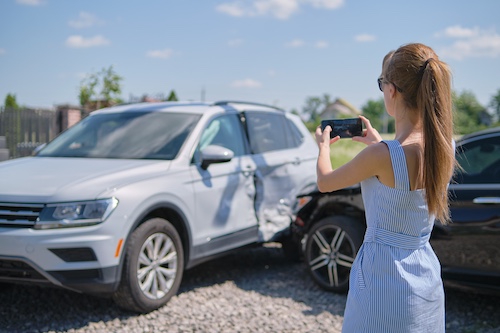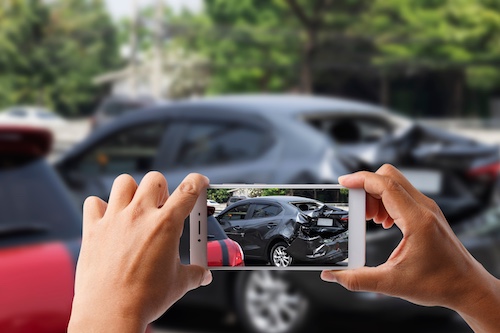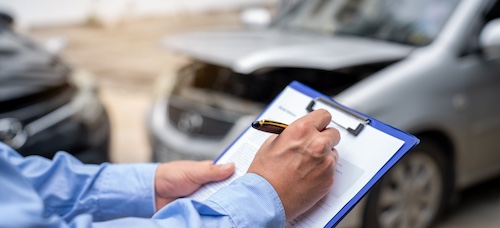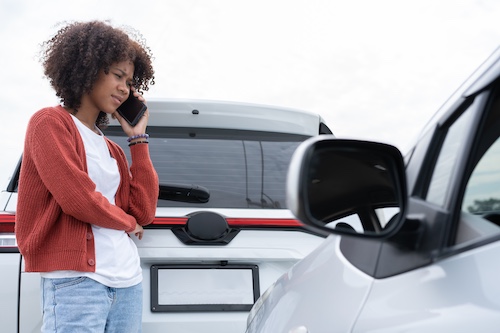Why Evidence Matters After a Car Accident in Tennessee
Strong evidence can decide whether you receive fair compensation or walk away with nothing. After a car crash, your ability to prove fault, document injuries, and support your insurance claim depends on the evidence you collect. From police reports and medical records to photos and witness statements, every detail counts.
In this blog, you will learn how to gather evidence after a car accident, what types of documentation are most important, and how working with an experienced Knoxville car accident lawyer can help you build a strong claim and pursue fair compensation.
Immediate Steps at the Accident Scene
Taking quick and clear action at the crash site helps protect your health and strengthens your car accident claim.
Check for Injuries and Call for Help
Start by checking for injuries. Call 911 if anyone is hurt, even if the injuries seem minor. Do not move anyone who is seriously injured unless there is immediate danger. Seeking medical attention right away creates important medical records that support your case. These records help prove the injuries sustained in the car crash.
Move to Safety and Prevent Further Damage
If it is safe and your vehicle is drivable, move it out of traffic. This reduces the risk of another accident. Turn on your hazard lights. Use cones or flares if you have them. Preventing further vehicle damage helps with insurance claims and keeps the crash site secure.
Call the Police and Request an Official Accident Report
Tennessee law requires drivers to report an accident that causes injury, death, or property damage over $400. This is stated in Tennessee Code Annotated § 55-10-106. Ask the police officers to file an official police report. This report includes key details about the parties involved, the location, and what the officer observed. The official report can help prove fault and is often used by insurance companies and attorneys.
Document the Accident Scene
Use your phone to take pictures of the accident scene. Get clear shots of vehicle damage, skid marks, traffic signs, and weather conditions. Take photos from multiple angles. Include wide shots and close-ups. This kind of visual evidence plays a big role in determining liability.
Exchange Information With All Parties Involved
Collect contact details from all drivers, passengers, and any witnesses. Get names, phone numbers, insurance information, and license plate numbers. Also, ask witnesses for short statements about what they saw. These witness statements can offer valuable insights and support your version of how the accident occurred.
Avoid Admitting Fault
Stay calm. Do not admit fault or speculate about what happened. Keep your conversation focused on exchanging information. Anything you say at the crash site may be used later by insurance adjusters to deny or reduce your claim.
Collecting Physical and Digital Evidence
After a car accident, the strength of your claim often depends on the quality and type of evidence collected. Physical and digital evidence can help prove fault and support your right to fair compensation.
Inspect Vehicle Damage and Debris
Examine all vehicles involved. Take clear photos of dents, broken parts, and any other damage. Capture both close-up and wide-angle shots. Look for pieces of the car that may have come off during the crash. These parts can help accident reconstruction specialists understand how the accident happened.
Document Skid Marks and Road Conditions
Skid marks and debris on the road provide valuable information. Photograph them before they fade or are cleaned up. Include images of potholes, oil spills, or anything that may have contributed to the accident. These details support your claim when trying to establish fault.
Secure Surveillance and Dashcam Footage
If the car crash happened near businesses or homes, ask if they have surveillance cameras. Request a copy of any video showing the crash. If you have a dashcam, save the footage immediately. This type of digital evidence can be powerful when trying to prove liability.
Collect Evidence From Mobile Devices
If you or a passenger recorded the accident or the aftermath, save the videos and photos. Check if any nearby vehicles had dashcams that may have captured the crash. Also, document text messages or calls made around the time the accident occurred to show timelines or responses.
Keep a Record of Emergency Calls and Reports
Request a copy of the 911 call if you contacted emergency services. This call can confirm when the accident occurred and what was reported. Save any emails or digital receipts related to towing, repairs, or medical treatment. These documents provide a detailed account of what followed the accident.
Preserve All Evidence Properly
Store all files, photos, and videos in multiple locations. Save them on your phone, cloud storage, and an external drive if possible. Physical items, such as damaged personal property, should be kept in a safe place. Keeping all evidence organized and secure helps your car accident attorney build a strong case.
Official Records and Medical Documentation
Official records and medical documentation provide strong evidence after a car accident. These records help support your version of events and prove the injuries sustained.
Request the Official Police Report
Ask the responding officers for the official police report number before leaving the scene. You can request a copy from the local law enforcement agency. This report includes the names of the parties involved, witness statements, a summary of the accident, and the officer’s opinion on fault. Insurance companies and car accident attorneys often rely on this report during legal proceedings and settlement discussions.
Keep All Medical Records and Bills
Seek medical attention as soon as possible, even if you feel fine. Some injuries are not visible or may appear later. Medical records document your diagnosis, treatment, and progress. They serve as evidence that your injuries are directly related to the car crash. Keep copies of all medical bills, prescriptions, and discharge instructions. This helps prove the cost of your treatment and supports your claim for fair compensation.
Track Ongoing Medical Treatment
If you need continued care, document each appointment. Keep a list of follow-up visits, therapy sessions, and any specialist referrals. Each record shows the extent of your recovery process and how the injuries impact your daily life. Consistent documentation also shows that you are taking your recovery seriously.
Save Insurance Communications
Keep all letters, emails, and messages from your insurance company and the other driver’s insurer. These communications can reveal how the insurance adjusters are handling your claim. They may also include important deadlines or settlement offers. Your car accident attorney will use this information to protect your rights and push for a favorable outcome.
Maintain a Personal Injury Journal
Write down how your injuries affect your daily activities. Include pain levels, emotional stress, and time missed from work. This journal adds a personal layer to your official records. It helps explain how the car accident changed your routine and supports claims for lost wages and pain and suffering.
Legal Considerations for Evidence Collection in Tennessee
Understanding the legal rules in Tennessee helps you protect your rights and preserve the evidence needed for a strong car accident claim.
Know the Statute of Limitations
Tennessee law gives you one year from the date the accident occurred to file a personal injury claim. This is stated in Tennessee Code Annotated § 28-3-104. If you miss this deadline, the court will likely dismiss your case. Start gathering evidence immediately so your car accident attorney has enough time to prepare your claim.
Understand the Duty to Report
You must report a car accident that results in injury, death, or property damage over $400. This is required under Tennessee law. Failing to report the crash can lead to penalties and may weaken your case. The official report filed by the police becomes a key piece of evidence.
Be Aware of the Comparative Fault Rule
Tennessee follows a modified comparative fault system. If you are 50 percent or more at fault, you cannot recover damages. If you are less than 50 percent at fault, your compensation will be reduced by your percentage of fault. This rule is outlined in Tennessee Code Annotated § 29-11-103. Solid evidence helps prove liability and protect your share of compensation.
Preserve Evidence the Right Way
Physical evidence and digital files must be kept safe. Do not alter or dispose of any damaged property from the accident. Save videos, photos, and documents in multiple locations. Your car accident attorney may need to present this evidence in court or use it during negotiations with insurance adjusters.
Use Legal Tools When Needed
If you cannot access certain types of evidence, such as surveillance footage or phone records, your attorney can use legal tools like subpoenas to obtain them. Acting quickly improves your chances of securing this evidence before it is deleted or lost.
Contact an Experienced Knoxville Car Accident Attorney Today!
If you’ve been injured in a car accident, taking the right steps from the start can make all the difference in your case. Our team at Knoxville Car Accident Lawyer is here to help you gather strong evidence, preserve critical records, and deal with insurance companies on your behalf.
Contact us at 864-444-2062 for a free claim review today!







